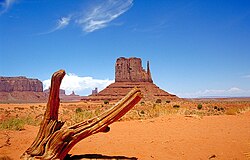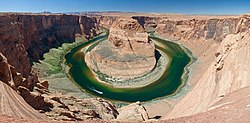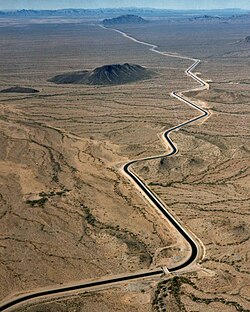The Selected picture box on the portal chooses one of the following at random when displaying the page. Follow the instructions below for adding or nominating a new picture to the list.
Usage
Football related Featured pictures from Wikipedia or Commons can be added directly to this list without nomination. All other images should be nominated first to ensure that we only display our best work on the portal. The procedure for nomination is at the bottom of this page.
Template
{{Portal:Arizona/Selected picture/Layout
|image=
|size=
|caption=
|text=
|credit=
|link=
}}
Note that the prefix Image: is not required when using this template, also - the template will auto-wikilink the article entered in the link= field. Further information on this template can be found at Portal:Arizona/Selected picture/Layout.
To add a new picture
- Click on the next successive empty entry or red link from this page.
- Paste the above layout template if it isn't already there.
- Add a free image and caption.
- Add the credit line for the author with a wikilink or external link to their profile if possible.
- Write a short description in the text field using information about the picture and its subject, you may find it useful to examine the existing entries for an idea of the length required.
- Ensure the main subject of the image is in bold and add this same article to the link field.
- Preview the page.
- Save the page.
- Go to the main Portal:Arizona page.
- Click on edit page.
- Update "max=" to its new total for the {{ Random portal component}} on the main page. The line which is edited is this one: {{Random portal component|max=4|header=Selected picture|subpage=Selected picture}} Make sure that "max=" is the same numerical value as the image entry added above (i.e. if you added image 43, then max=43)
Selected pictures list
Pictures 1 - 20
Portal:Arizona/Selected picture/1
 |
Monument Valley is located on the southern border of Utah with northern Arizona. The valley lies within the range of the Navajo Nation Reservation, and is accessible from U.S. Highway 163. The Navajo name for the valley is Tsé Bii' Ndzisgaii (Valley of the Rocks).The area is part of the Colorado Plateau. The floor is largely Cutler Red siltstone or its sand deposited by the meandering rivers that carved the valley. The valley's vivid red color comes from iron oxide exposed in the weathered siltstone. The darker, blue-gray rocks in the valley get their color from manganese oxide.
Portal:Arizona/Selected picture/2
 |
Havasu Falls, one of the four waterfalls of the Havasupai Indian Reservation, is located near the village of Supai, Arizona. It is the second of four falls on Havasu Creek, which empties into the Grand Canyon on the Colorado River. The water of Havasu Creek has a bluish green tint due to the heavy lime content of the water. The fall is forked and looks like two falls when the river is flowing heavily.
Portal:Arizona/Selected picture/3
 |
A panoramic view of Horseshoe Bend, a horseshoe-shaped meander in the Colorado River, from State Route 89. It is located approximately 4 miles (6.4 km) south of Page, Arizona, slightly downstream from the Glen Canyon Dam and Lake Powell.
Portal:Arizona/Selected picture/4
 |
An HDR image of Upper Antelope Canyon, Page, Arizona. Antelope Canyon is the most-visited and most-photographed slot canyon in the Southwestern United States. It was formed by erosion of Navajo Sandstone, primarily due to flash flooding and secondarily due to other sub-aerial processes. Photography within the canyons is difficult due to the wide exposure range (often 10 EV or more) made by light reflecting off the canyon walls.
Portal:Arizona/Selected picture/5
 |
Glen Canyon, in southeastern and south central Utah and northwestern Arizona within the Vermilion Cliffs area, was carved by two rivers, the Colorado River and the San Juan River.A reservoir, Lake Powell, was created by the Glen Canyon Dam. Lake Powell emerged from a struggle over damming Dinosaur National Monument.
Portal:Arizona/Selected picture/6
 |
The Central Arizona Project Aqueduct is a diversion canal in Arizona in the United States. The aqueduct diverts water from the Colorado River from Lake Havasu City into central and southern Arizona. The Central Arizona Project is a multipurpose water resource development and management project that was designed to provide water to nearly one million acres (4,000 km²) of Indian and non-Indian irrigated agricultural land areas as well as municipal water for several Arizona communities.
Portal:Arizona/Selected picture/7
 |
This photograph of Canyon de Chelly, showing 'seven riders on horseback and dog', is one of his most celebrated images from The North American Indian. Canyon de Chelly is a National Park located in northeast Arizona, United States. Founded April 1, 1931, it preserves artifacts of the early Southwest Indian tribes that lived in the area, including the Navajo. The cliffs of the canyon are pockmarked with hand carved caves — the ruins of former villages.
Portal:Arizona/Selected picture/8
 |
Petrified wood, such as this sample found in Petrified Forest National Park, Arizona, United States, is a fossil wood where all the organic materials have been replaced with minerals, while retaining the original structure of the wood.
Portal:Arizona/Selected picture/9
 |
A petrified log in Petrified Forest National Park, located in northeastern Arizona, US. The pieces of wood found in the park are mostly of the extinct species Araucarioxylon arizonicum. The logs were buried under volcanic ash, which was the source of the silica that helped to permineralize the buried logs, replacing wood with silica, colored with oxides of iron and manganese.
Portal:Arizona/Selected picture/10
| [[Image:|center|250px|]] |
Nominations
Feel free to add related featured pictures to the above list. Other pictures may be nominated here.
- Pictures must be
- Free to use and hosted on Commons
- Of good quality (not blurred, grainy or discoloured)
- Interesting
- Relevant to an article or topic
Current Nominations
none